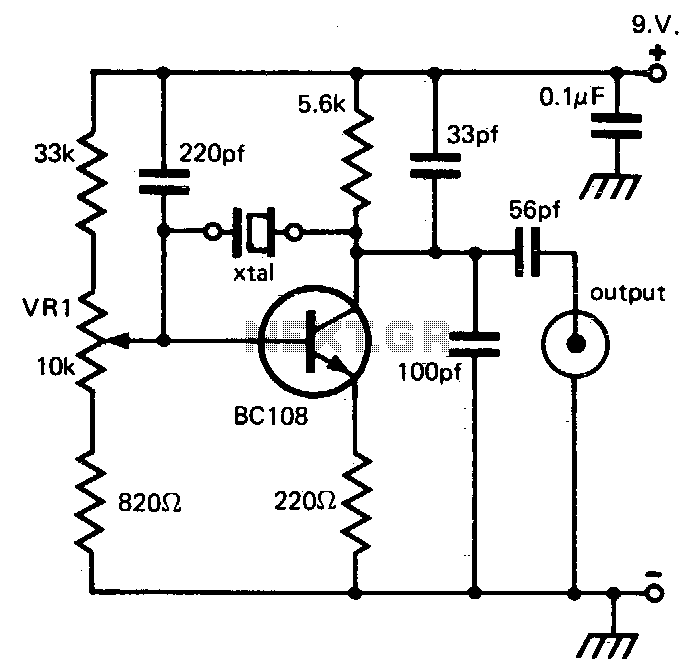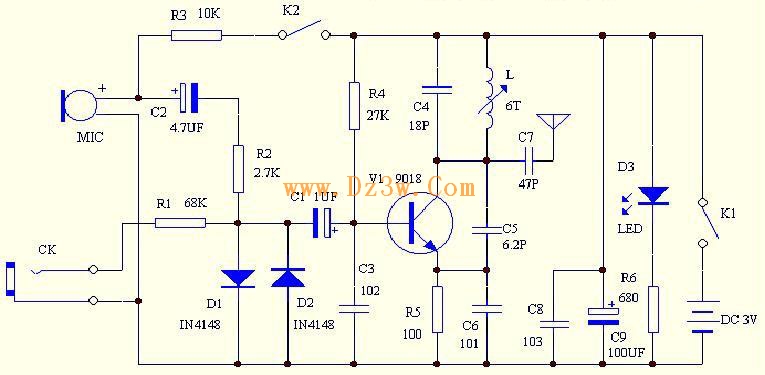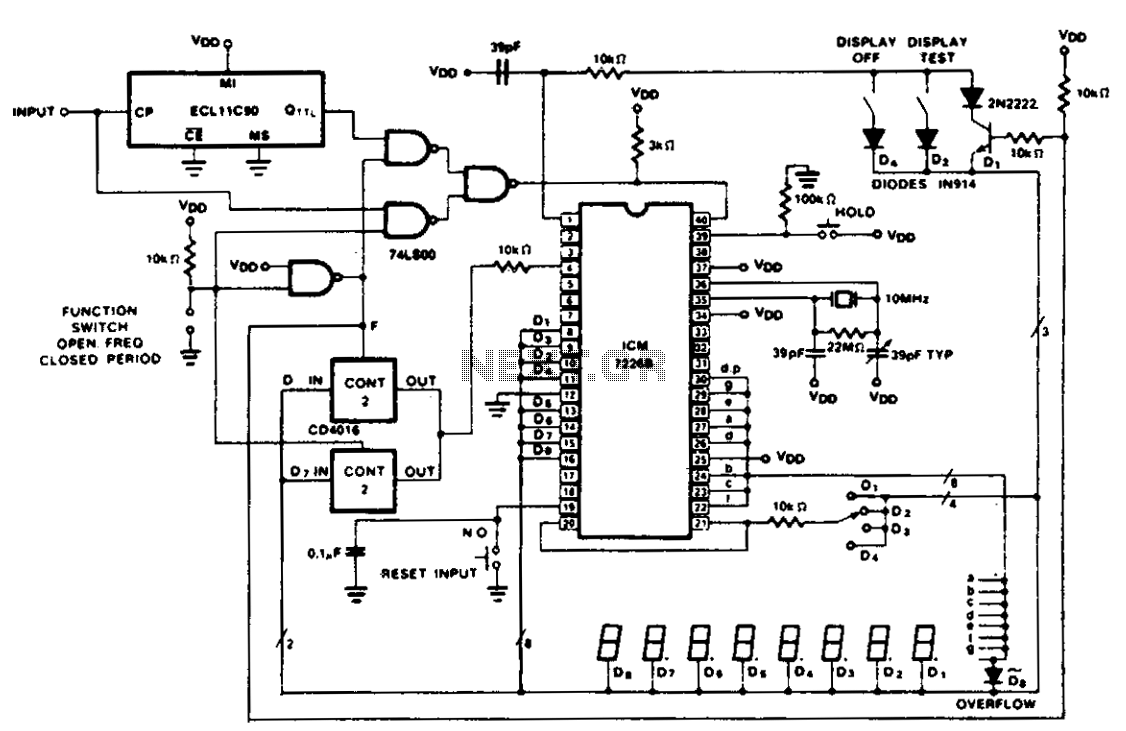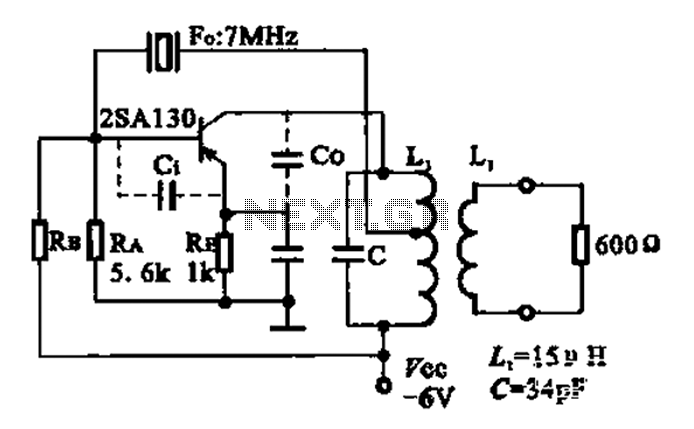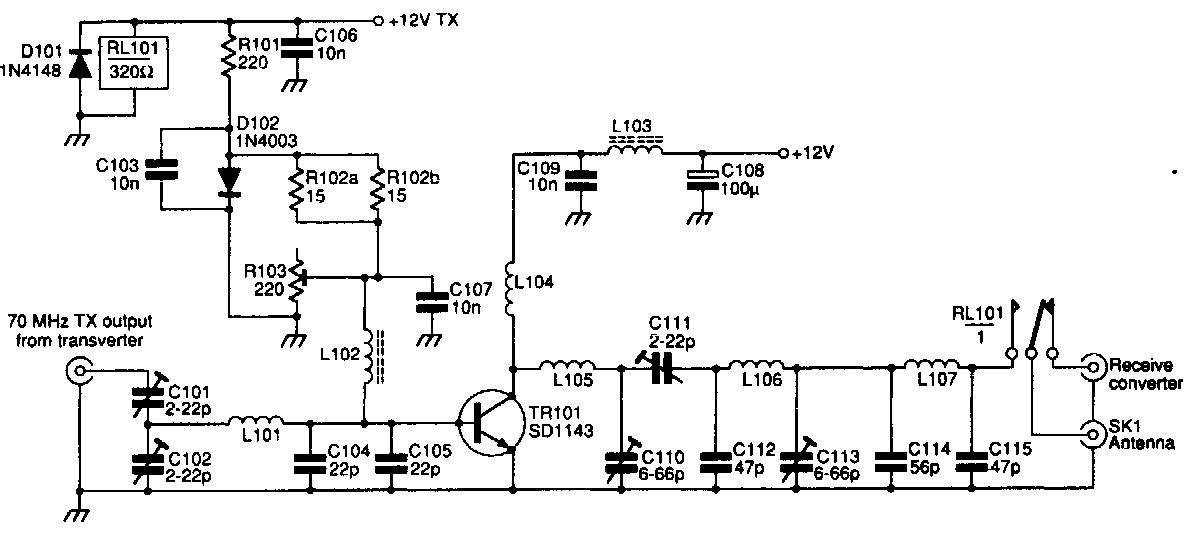
43925 MHz ATV DOWNCONVERTER
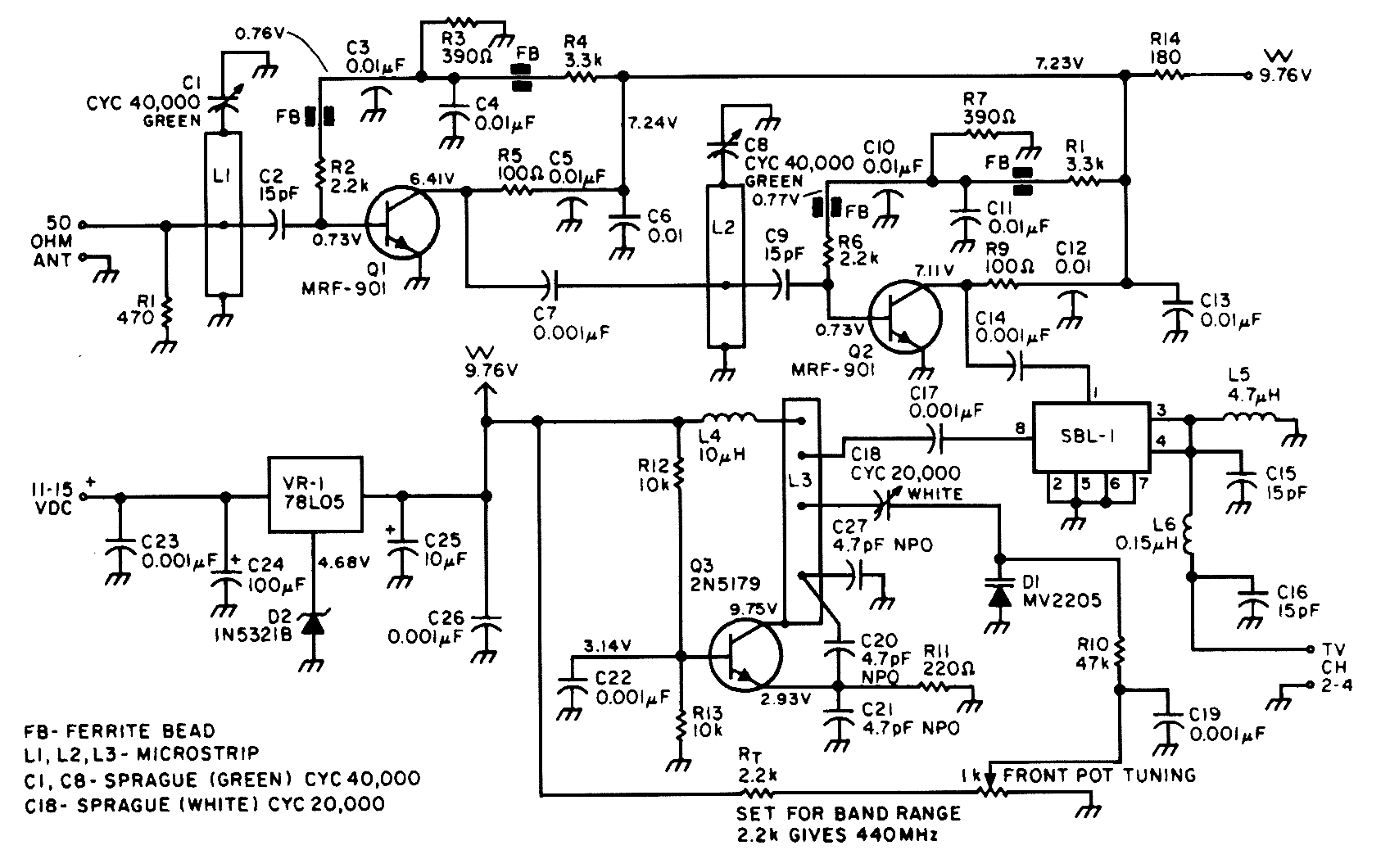
Most ATV (Amateur Television) transmitters use a DSB (Double Sideband) signal, while commercial television stations utilize a VSB (Vestigial Sideband) signal. This converter takes advantage of the lower sideband, leading to reduced interference from repeaters operating in the 440 to 445 MHz range. However, this method may experience VHF image responses from channel 29 if that channel is active in the vicinity.
The described converter is designed to facilitate the transmission of amateur television signals by leveraging the characteristics of double sideband modulation. By focusing on the lower sideband, the converter minimizes interference, particularly in environments where multiple repeaters are present within the specified frequency range. This is particularly advantageous in crowded RF environments, where the potential for signal overlap and interference is high.
The circuit typically includes a mixer stage that combines the input DSB signal with a local oscillator signal, effectively shifting the frequency to the desired output band. Filters are employed to isolate the lower sideband while attenuating unwanted frequencies, including the upper sideband and any spurious signals that may arise from the mixing process.
The choice of components, such as low-noise amplifiers and high-quality filters, is critical to maintaining signal integrity and minimizing distortion. The design must also account for the potential for VHF image responses, particularly from adjacent channels like channel 29. This necessitates careful frequency planning and possibly the inclusion of additional filtering stages to mitigate such interference.
Overall, the implementation of this converter is essential for amateur television operators seeking to optimize their transmission capabilities while navigating the challenges posed by existing commercial broadcast signals and other RF interferences.Most ATV (Amateur Television] transmitters transmit a DSB signal and commercial television stations use a VSB (Vestigial Sideband) signal. This fact is made use of in this converter to use the lower sideband. This results in less interference from repeaters that occupy the 440- to 445-MHz por-tion of the band.
However, this approach might suffer f rom VHF image responses from channel 29, if that channel is active in your area. 🔗 External reference
The described converter is designed to facilitate the transmission of amateur television signals by leveraging the characteristics of double sideband modulation. By focusing on the lower sideband, the converter minimizes interference, particularly in environments where multiple repeaters are present within the specified frequency range. This is particularly advantageous in crowded RF environments, where the potential for signal overlap and interference is high.
The circuit typically includes a mixer stage that combines the input DSB signal with a local oscillator signal, effectively shifting the frequency to the desired output band. Filters are employed to isolate the lower sideband while attenuating unwanted frequencies, including the upper sideband and any spurious signals that may arise from the mixing process.
The choice of components, such as low-noise amplifiers and high-quality filters, is critical to maintaining signal integrity and minimizing distortion. The design must also account for the potential for VHF image responses, particularly from adjacent channels like channel 29. This necessitates careful frequency planning and possibly the inclusion of additional filtering stages to mitigate such interference.
Overall, the implementation of this converter is essential for amateur television operators seeking to optimize their transmission capabilities while navigating the challenges posed by existing commercial broadcast signals and other RF interferences.Most ATV (Amateur Television] transmitters transmit a DSB signal and commercial television stations use a VSB (Vestigial Sideband) signal. This fact is made use of in this converter to use the lower sideband. This results in less interference from repeaters that occupy the 440- to 445-MHz por-tion of the band.
However, this approach might suffer f rom VHF image responses from channel 29, if that channel is active in your area. 🔗 External reference
